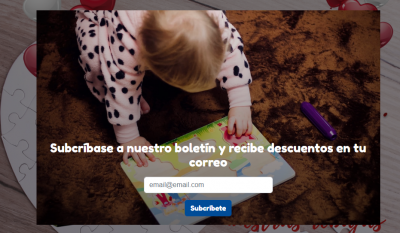A comprehensive glossay of website building terms
A
Accessibility: The ability of a website to be used by people with disabilities.
API (Application Programming Interface): A set of rules and specifications that defines how two pieces of software can communicate with each other.
B
Backend development: The part of website development that deals with the server-side code, which is responsible for storing data and processing user requests.
Blog: A website or section of a website that contains regularly published posts.
Block: A container or section that can be added to a web page.
Bootstrap: A popular open-source CSS framework for creating responsive websites.
Breadcrumb navigation: A type of navigation that shows the user's current location within a website's hierarchy.
Browser: A software application that allows users to access and view web pages.
C
CMS (Content Management System): A software application that allows users to create, manage, and publish content on a website without having to know how to code.
CSS (Cascading Style Sheets): A language for styling websites.
Call to action (CTA): A phrase or button that encourages users to take a specific action, such as signing up for a newsletter or making a purchase.
Click-through rate (CTR): The percentage of users who click on a link.
Content: The written, visual, or auditory material that is presented on a website.
Conversion rate: The percentage of visitors to a website who take a desired action, such as making a purchase or signing up for a newsletter.
Copyright: A legal right that protects the original works of authorship, including literary, dramatic, musical, and artistic works.
D
Domain name: The unique address of a website on the internet.
Dropdown menu: A menu that appears when a user clicks or hovers over a particular item.
Dynamic website: A website that changes its content based on user input or other factors.
Design: The process of planning and creating the appearance and layout of a website.
Development: The process of creating and implementing a website.
DNS (Domain Name System): A hierarchical and decentralized naming system for computers, services, or any resource connected to the Internet or a private network.
E
Element: An element is the most basic building block in HTML. It refers to any individual HTML tag. In the website builder, the term "element" is often used more broadly to refer to any individual part of a webpage, including both HTML elements and other components like buttons or input fields
Email marketing: The use of email to promote a business or product.
Error page: A web page that is displayed when an error occurs.
Favicon: A small icon that is associated with a website.
Footer: The area at the bottom of a web page that typically contains copyright information and links to other pages on the website.
Frontend development: The part of website development that deals with the client-side code, which is responsible for what the user sees and interacts with.
G
Gallery: A collection of images or videos on a website.
Google Analytics: A free web analytics service that provides insights into website traffic and user behavior.
H
Hero section: The large banner image or video that appears at the top of a web page.
Header: The area at the top of a web page that typically contains the website's logo and navigation menu.
Homepage: The main page of a website.
HTML (HyperText Markup Language): The standard markup language for creating web pages.
HTML5: The latest version of the HTML markup language.
Hyperlink: A link that takes the user to another webpage or resource.
HTTP (HyperText Transfer Protocol): The protocol used to transfer data between web servers and browsers.
HTTPS (HyperText Transfer Protocol Secure): A secure version of HTTP that encrypts data transmitted between web servers and browsers.
I
Image optimization: The process of reducing the file size of images without sacrificing quality.
Information architecture: The organization of information on a website.
Interactive design: The design of websites that allow users to interact with them.
J
JavaScript: A scripting language that is used to add interactivity to websites.
K
Keyword: A word or phrase that people use to search for information online.
L
Landing page: A web page that is designed to capture leads or encourage visitors to take a specific action.
Layout: The arrangement of elements on a web page.
Link: A connection between two web pages or other resources.
Local SEO (Search Engine Optimization): The process of optimizing a website to rank higher in search results for local searches.
Logo: A visual representation of a brand or company.
M
Meta description: A short description of a website that is displayed in search engine results.
Meta keywords: Words or phrases that are associated with a website and that are used by search engines to index it.
Mobile-friendly design: A website design that is optimized for viewing on mobile devices.
MySQL: A popular open-source relational database management system.
N
Navigation: The system of links that allows users to move around a website.
Nofollow: A link attribute that tells search engines not to count the link for ranking purposes.
Noindex: A meta tag that tells search engines not to index a web page.
O
Optimization: The process of improving the performance of a website.
P
Page speed: The time it takes for a webpage to load.
Plugin: A piece of software that adds additional functionality to a website.
Q
Query string: A part of a URL that contains information about a request.
R
Responsive design: A website design that automatically adjusts its layout to fit different screen sizes.
S
Search engine optimization (SEO): The process of improving a website's ranking in search engine results.
Sitemap: A file that contains a list of all the pages on a website.
Social media integration: The process of adding social media buttons and links to a website.
Style guide: A set of guidelines for the design of a website.
Subdomain: A part of a domain name that is subordinate to the main domain.
Submenu: A menu that appears within another menu.
T
Template: A pre-designed layout for a website.
Testimonial: A statement from a satisfied customer.
Typography: The use of fonts and typefaces in design.
U
URL (Uniform Resource Locator): The address of a webpage on the internet.
User experience (UX): The overall experience that a user has when using a website.
User interface (UI): The design of a website's interface, including the buttons, menus, and other elements that users interact with.
V
Video: A moving image that is displayed on a website.
Viewport: The visible area of a webpage.
W
Website builder: A software application that allows users to create a website without having to know how to code.
Web hosting: The service of providing storage and access for a website's files.
Wireframe: A low-fidelity mockup of a webpage.
Widget: A self-contained, reusable component or tool that performs a specific function on a web page.




